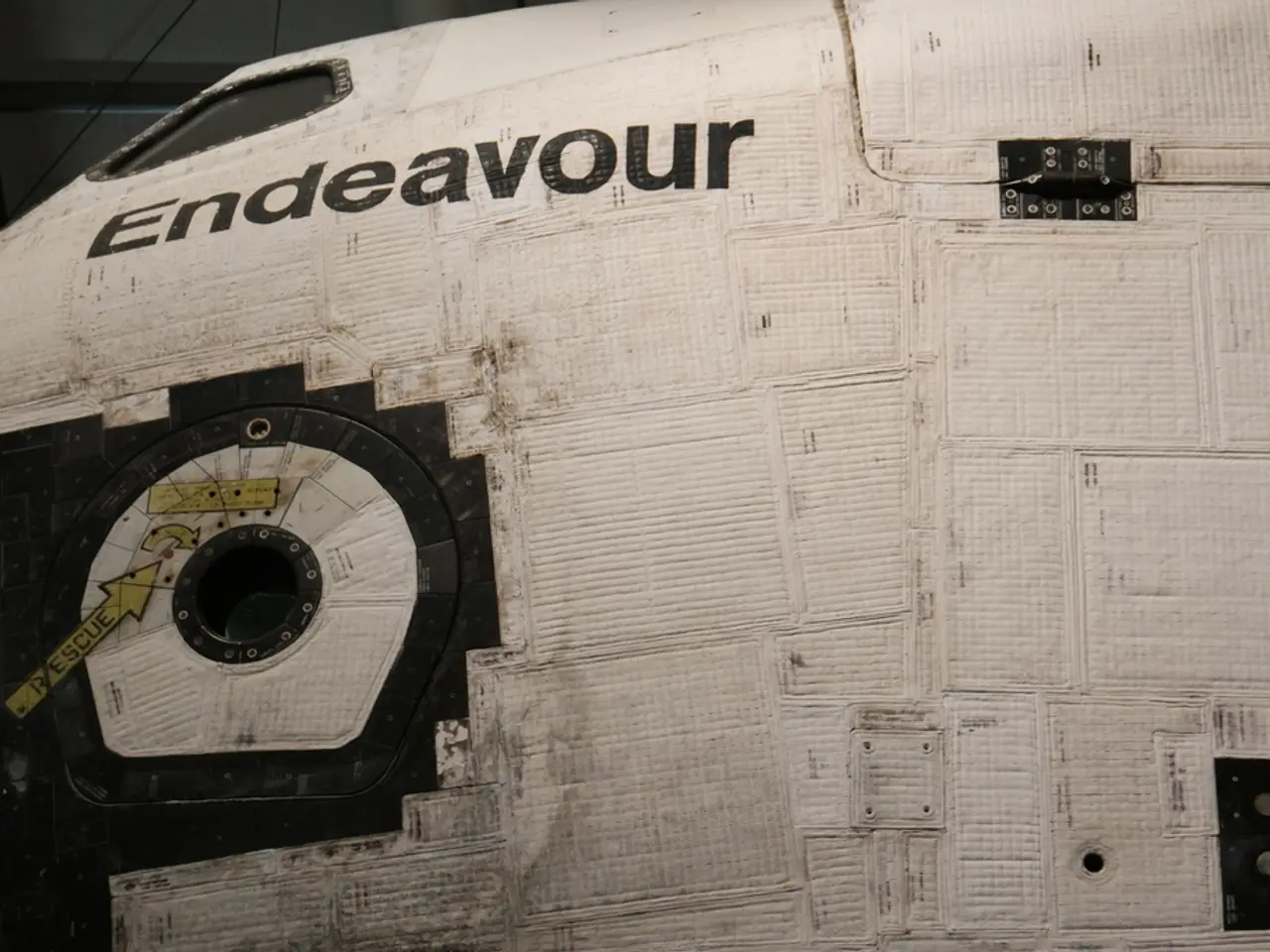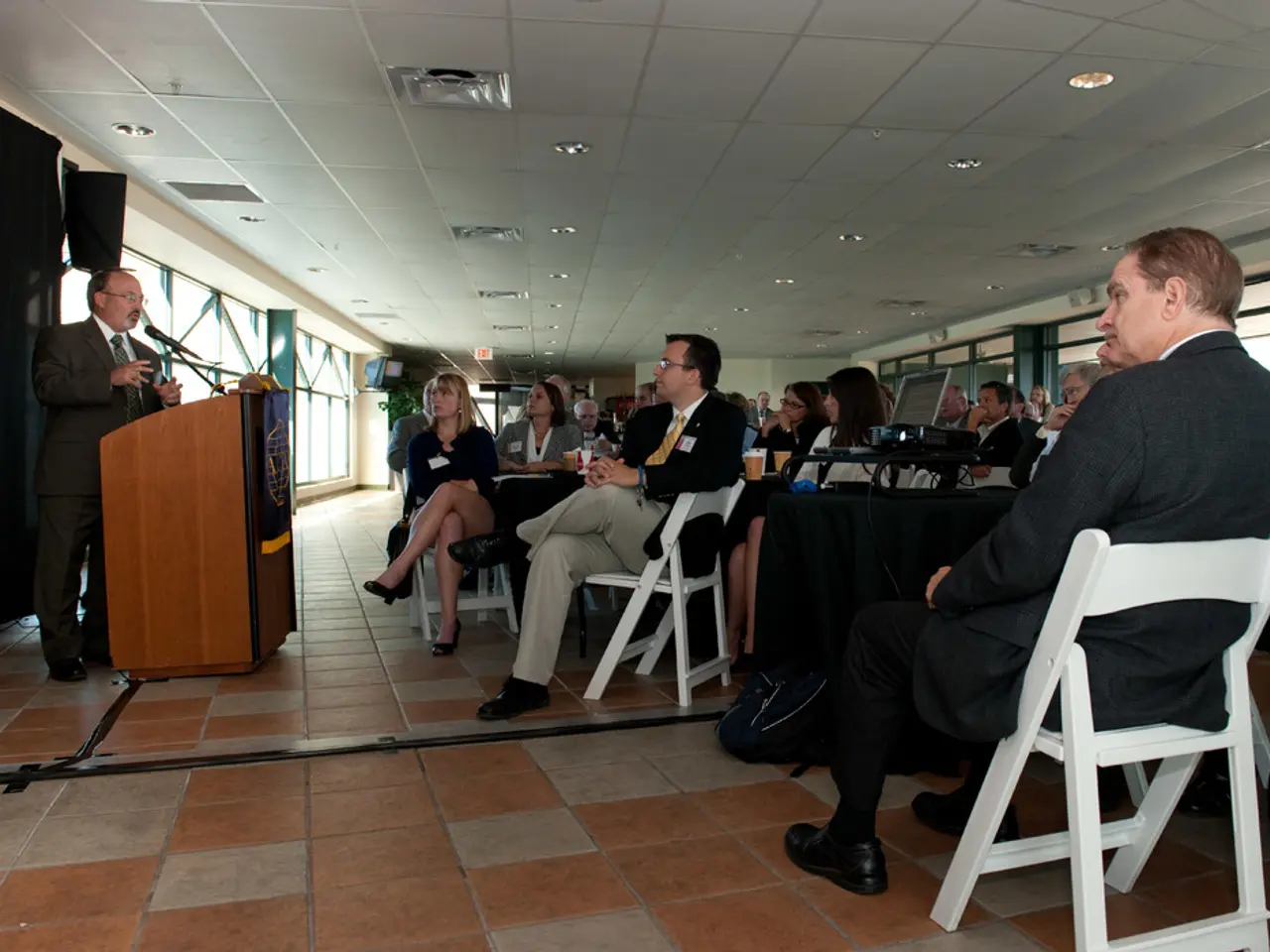Space commerce is on the brink of a game-changer: a commercial space station is imminent, with the potential to reshape the cosmos permanently.
In the realm of space exploration, a new milestone is fast approaching. Haven-1, the world's first commercial space station, is set to be launched by Vast in May 2026. This innovative orbital habitat, which will not be run by NASA, Roscosmos, or the China National Space Administration, represents a radical shift in the way we live and work in space.
Haven-1 is a single-module orbital station designed to accommodate four crew members for missions lasting approximately ten days each, with a maximum mission duration of up to 40 days. The station will operate in a 425 km circular orbit and will support up to 300 kg of payload. With a planned lifespan of three years and about four crewed missions during this period, Haven-1 is poised to make a significant impact on space research.
One of the unique features of Haven-1 is its ability to spin end-over-end while uncrewed, simulating Lunar gravity (approximately 1/6 g). This novel feature is intended to enhance research possibilities, particularly in the field of plant growth, human biology, drug screening, and protein crystal formation.
The interior of Haven-1 is designed to be clean, considered, and unusually elegant for a space habitat. This departure from the more utilitarian look of past space stations like the ISS is intended to improve crew comfort, rest, communication, and productivity during their time aboard.
Vast, the company behind Haven-1, aims to redraw the map of low Earth orbit by demonstrating that space infrastructure can be lean, elegant, and commercially viable. The company is currently evaluating bids for the next generation of orbital platforms, with Haven-1 being a strategic move to win the contract. Other companies, such as Axiom Space, Blue Origin, Northrop Grumman, and Starlab, are also in the running.
Between missions, Haven-1 will be used to test artificial gravity systems. Additionally, it will be the first space station to connect to Starlink, providing gigabit-speed internet in orbit.
Interstellar Lab, a French company, will conduct research on plant growth in microgravity within Haven-1. Vast has also signed partnerships with Redwire Space (US), Yuri (Germany), and Exobiosphere (Luxembourg) for research on Haven-1.
The number one priority for Haven-1 is safety. The primary structure of the station is already being assembled and is due for testing this summer. Electromagnetic interference and thermal vacuum tests are scheduled from January through March 2026 to ensure the station can withstand space conditions. Pre-launch operations such as fueling and wet dress rehearsals are set for April and May 2026.
Max Haot, CEO of Vast, emphasizes that the purpose of Haven-1 is not to build a luxury hotel in space, but to create a great environment for work. The life-support system on Haven-1 runs on a simpler "open loop" design similar to that used on the Space Shuttle.
Looking ahead, Vast is already working on a follow-up station named Haven-2, planned as a much larger and permanent space station consisting of multiple modules with initial launches starting in 2028 and expansion continuing until 2032. Axiom Space has already been awarded a $140 million contract with NASA to attach at least one module to the ISS.
In conclusion, Haven-1 is a pioneering commercial space station focused on quick, safe deployment with a small crew capacity and innovative features like simulated Lunar gravity. Scheduled for launch in May 2026, Haven-1 serves as a precursor to more ambitious commercial stations from Vast.
- In May 2026, Vast is set to launch Haven-1, the world's first commercial space station, marking a significant shift in space exploration and research.
- Haven-1, designed for short-term missions, will be located in a 425 km circular orbit, accommodating four crew members and supporting up to 300 kg of payload.
- Unique research opportunities are offered by Haven-1's ability to spin end-over-end while uncrewed, simulating Lunar gravity, fostering advancements in plant growth, human biology, drug screening, and protein crystal formation.
- Vast intends to revolutionize the low Earth orbit landscape by demonstrating that space infrastructure can be lean, elegant, and commercially viable, with Haven-1 being a strategic move to win future contracts.
- In addition to supporting crew missions, Haven-1 will be used between missions to test artificial gravity systems and offer high-speed internet through its connection to Starlink.
- Collaborative research on Haven-1 will be conducted by Interstellar Lab (France), Redwire Space (US), Yuri (Germany), and Exobiosphere (Luxembourg), with a focus on plant growth in microgravity.
- Safety is the primary concern for Haven-1, with structural testing, electromagnetic interference, and thermal vacuum tests scheduled to ensure the station can withstand space conditions before its launch in May 2026.




